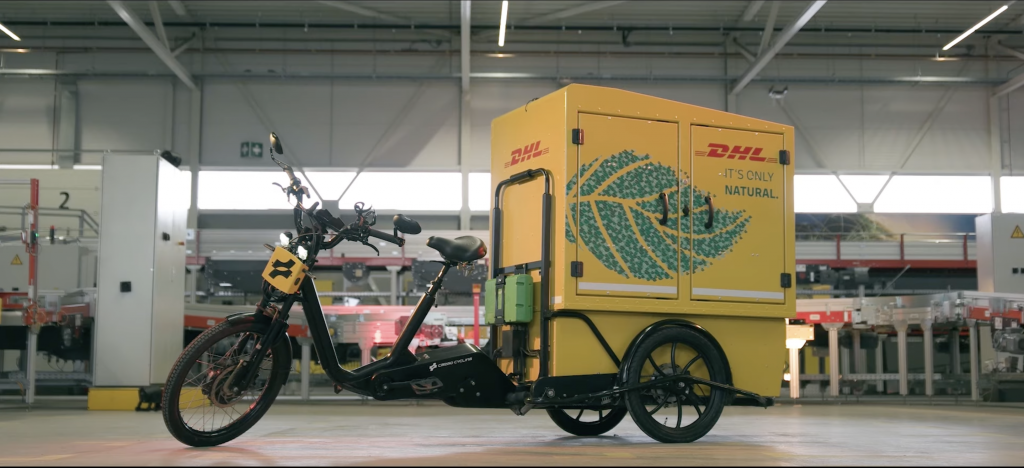Distribution hubs & cargo bikes: reimagining Wellington’s logistics
Looking internationally it’s clear Wellington’s delivery logistics could be improved. A lot of it comes down to that “last mile.” Improving this starts with freight distribution hubs.
As Wellington car-frees larger parts of the city, we have the opportunity to rethink our logistics and delivery procedures. This could mean adjusting the times delivery vehicles are allowed in central areas or the use of smart loading bays or numerous other solutions. But a simple thing we can do is lean into freight distribution hubs.
The concerns around logistics tend to focus on the “last mile.” This is the leg of the journey that gets goods to your front door. That could be a courier, your local postie, or a great big delivery truck.
In cities, many businesses rely on diesel-powered trucks, cars, vans etc. for deliveries. These businesses may receive multiple deliveries throughout the day. The result is a lot of vehicles driving through town throughout the day competing with people for space. Not to mention the pollution and congestion all this creates.
For drivers, it can be stressful too. It can often be difficult to find parking leading to double-parking and extra trips. More traffic can mean late or missed deliveries which negatively affects both parties.
But these businesses still need their deliveries to survive. It’s no wonder some of the first concerns when people propose car-freeing are about delivery vehicles. And we’ve addressed many of those concerns previously. For now, we want to introduce something simple yet fundamental: distribution hubs.
The key idea is to have hubs outside of the central city or micro-hubs around a city that freight delivers to. This would mean larger trucks and vans wouldn’t have to navigate city streets but would instead just have to make it to a consolidation centre. Goods could be stored here until they’re ready to be picked up. With everything together, packages and deliveries could be more efficiently bundled to reduce the needed number of trips.

Combining this system with a car-free city centre would greatly reduce wear-and-tear on roads, noise, and congestion. Meanwhile, it would improve air quality and the safety of people walking or on bikes.
So who gets goods from the centre to you?
One option, which many cities such as Toronto are embracing, is delivery bikes. There’s now quite a variety in designs that make larger deliveries viable. Greater Auckland have a wonderful article showing off a bunch of these solutions. Many are used for purposes outside of classic deliveries such as for paramedics or tradies.
Here in Wellington, Nocar Cargo has been a sustainable option for inner-city deliveries since 2015. Their electric cargo bikes can carry up to 80kg and are well-suited to the relatively flat CBD.
The company has been growing steadily, especially as van couriers have had difficulting keeping up with driver shortages and covid-19. Earlier this year, Nocar Cargo partnered with Aramex to combat this shortage. They now deliver 80 to 200 of their parcels each day from Nocar Cargo’s hub in Mt Victoria.
Bikes tend to be faster and more convenient than cars and vans in a city centre. One study found that electric cargo bikes deliver about 60% faster than vans, have a higher average speed and deliver on average 10 parcels an hour. Vans only deliver 6.
The same study found that bikes emitted 90% less than diesel vans and a third less than electric vans.

These solutions will work best with other initiatives and systems.
Electric bikes could pick up goods and complete deliveries during the day, especially in car-free areas. If a larger vehicle is necessary, they could complete those deliveries when people aren’t using the streets. Cities like Brisbane only allow deliveries to malls after midnight and before 7 am or 9:30 am depending on the day.
We could also implement more pickup points and parcel lockers. These again would reduce the number of deliveries needed as individuals could pick up their deliveries from a convenient site. They’re also estimated to decrease vehicle emissions and labour time by up to 70%.
The hubs will also best if our streets are safe and convenient for cycling. If these delivery bikes have to compete with too many large vehicles for space, the system likely won’t reach its potential.
Moves like this could positively affect our cities in numerous ways. As always, it will require a “mode-shift.” A rethinking of not just one piece of the puzzle, but a reexamination of the wider ecosystem.
Further resources
- Mode-shifting services and deliveries by Marita
- What happens when a city bans cars? by Grace Clark
- The Car-Replacement Bicycle (the bakfiets) from Not Just Bikes
- Car-Freeing the Golden Mile: Getting the house in order by Liz Allen
- People protested when this capital city went car-free. Now they love it by Sarah Wilson
Leave a comment